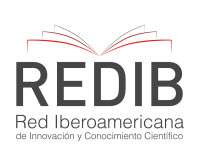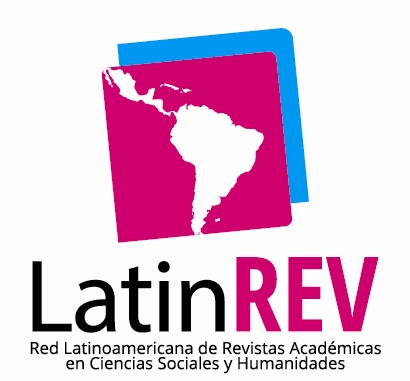Information For Authors
Interested in publishing in the journal? It is recommended to review the About the Journal page for the journal's section policies, as well as the Author Guidelines. Authors must register with the journal before publishing or, if they are already registered, they can simply log in and begin the five-step process.
The author interested in having his work published by the Dissertations Journal must accept the following conditions:
- Once a work has been accepted, the rights of reproduction and printing of it belong to the publishing institution. However, any reasonable request submitted by an author regarding permission to distribute his or her work will be considered.
- In order to contribute to the dissemination of knowledge, the Journal grants free access to its contents: essays, articles, reviews and interviews; and authorizes the photocopy of these for academic purposes as long as the proper citation of the source is made.
- The Journal does not accept papers that have been published in other sources.
- The Journal is not responsible for obtaining the necessary permissions for the partial reproduction of texts, tables or figures that have already been published in other sources; together with the correct citation of its origin, it is the responsibility of the author.
Note: The names and e-mail addresses entered in this journal will be used exclusively for the purposes stated by this journal and will not be available for any other purpose or person.
INSTRUCTIONS FOR AUTHORS
About the magazine
Dissertations is the virtual journal of the Philosophy Program of the University of Quindío (Armenia - Colombia). It is published biannually, and its purpose is to disseminate articles, essays, reviews, translations and, in general, written works that contribute to philosophical reflection and criticism. The published works are aimed at students, teachers, professionals, researchers and readers of philosophical topics.
About the process
By submitting their text to Dissertations, authors authorize its publication on the journal's web portal, and in the databases with which it carries out exchanges or associations. The process through which each submitted work must go through is:
1. Submission: through the Open Journal System platform:
https://ojs.uniquindio.edu.co/ojs/index.php/Disertaciones/about/submissions
For information contact the e-mail: disertaciones@uniquindio.edu.co
2.Structure of the texts: the first page of the article must be composed of: a. Full title, b. Full name of the author, c. Institution to which he is affiliated, d. Author's contact email, e. In the case of articles or essays, informative summary (not exceeding 250 words), f. Keywords (no more than four). The body of the text should not exceed 6,000 words. The content of the article must be subject to the MLA (Modern Language Association of America) standards, indicated in this section. The article must be accompanied by a review of the author (no more than 150 words) indicating academic training, field of performance and main publications.
3.Evaluation process: the steps to follow once Dissertations receive the article with the characteristics indicated in numeral 2, are: a. Initial reading of the document by the Dissertation Editorial Committee, after which, if necessary, suggestions are indicated to the authors to improve possible stylistic or argumentative inconsistencies, which do not affect the interests of the author, b. Sending the document to the author for the application of the observations made by the Dissertation Committee, c. Receipt of the second version of the article, d. Once the second versions are received, all articles are sent to academic peers for anonymous double-blind evaluation (this type of evaluation consists of the journal not knowing the identity of the academic peers evaluating the articles, and the peers, in turn, do not know the identity of the authors). e. Once Dissertations receives the concept of the peers, the authors are informed of the decision and its corresponding support, in cases where the publication is conditioned to changes, a response is expected from the authors, f. Dissertations asks authors for a letter of Assignment of copyright, g. Once the letter has been received, Dissertations publishes the articles adapted to its own design and typography.
About Citations (MLA Standard)
Intratextual (less than forty words): they are indicated after the sentence that precedes them, and their normativity is as follows:
1. They are closed in quotation marks and at the end the name of the author is indicated in parentheses and followed (without separations by signs or abbreviations) the number of the page from which the quotation is taken; example: "The less reason a man has to suppose himself to be right, the more vehemence he employs to assert that there is no doubt that he possesses absolute truth" (Russell 31).
2. When there are several pages cited, and these are continuous, an intermediate hyphen is used between the first and the last; example: (Russell 31-32).
3. When there are several pages cited, and these are not continuous, they are separated with commas; example: (Russell 31, 45, 66).
4. When there are several works by the same author cited in the article, the year that corresponds to the publication of the work is added to the citation, this is indicated between the surname and the page number (without separations by signs or abbreviations); example: (Russell 1985: 31).
5. When two or more of the cited works by the same author coincide in the year that corresponds to the publication of the work, a letter (in alphabetical order) is added to the year of publication (this action must be replicated in the bibliographic references); example: (Russell 1985a 31).
6. When there are two authors of the cited work, the surnames are indicated (in alphabetical order) joined by a conjunction; example: (Russell and Whitehead 75).
7. When there are more than two authors of the cited work, the surname of the compiler, or of the first author, is indicated, and et al. is added; example: (Swinburne et al. 98).
8.When the cited work (b) is within another work (a) (known as indirect quotation), "Cit. in" is added before the last name of the author of the work (a); example: (Cit. in Russell 88).
9. When the author is previously mentioned, in such a way that the reader has no doubt as to who the idea to be cited is, the quotation can dispense with the surname (and will adjust to the cases mentioned above); example: Wittgenstein maintains that "2.021 Objects form the substance of the world. That is why they cannot be composed" (39).
10. When instead of quoting the text directly, the paraphrase can be in two ways: 1. With clear reference to one or more pages, in which case the quotation maintains the regular form and is preceded by "Cf", which indicates Confront; example: (Cf. Russell 31). 2. With reference to the thesis or theses of the work in general, in which case the name of the author (or authors, maintaining the rules described above) is indicated and accompanied by the year of publication of the cited work; example: (Russell 1985). Paraphrases should not be enclosed in quotation marks.
11. When you want to draw attention to one or more words in the quotation, they should be italicized, and a comma should be added after the page number along with the expression "emphasis mine"; example: "2.021 Objects form the substance of the world. That is why they cannot be composed" (Wittgenstein 39, emphasis mine).
12. When the same work and the same page are cited in the same paragraph, then "Ibid." is placed in parentheses, in italics and without an accent; example: "2.021 Objects form the substance of the world. That is why they cannot be composed" (Wittgenstein 39). And then he deduces: "2.0211 If the world had no substance, it would depend on one proposition having sense, on another proposition being true" (Ibid.).
13. When the same work but different page is cited in the same paragraph, then "Id." is placed in italics and the page number; example: "2.012 Objects form the substance of the world. That is why they cannot be composed" (Wittgenstein 39). And, a few propositions later, he affirms: "2.026 The only thing that can guarantee the existence of something fixed are simple objects" (Id. 40).
Textual (equal to or greater than forty words): they are indicated in a separate paragraph of the sentence that precedes them, left indentation 1.25, and their normativity is similar to that of intertextual quotations.
Some abbreviations recognized and used by the Journal:
1. e.e. (that is).
2. Af. (Aphorism).
About bibliographic references (MLA Standard)
In the bibliographic references, only the works that were cited or paraphrased within the article should be indicated, as follows:
Books. The order in which the data must appear is as follows: Author's surname, First name. Title of the book (italics). Place of publication: Publisher, year.; example:
Wittgenstein, Ludwig. Tractatus lógico-philosophicus. Madrid: Alianza, 1973.
Journal articles. The order in which the data must appear is as follows: Author's surname, First name. "Title of the article" (in quotation marks), Name of the journal (italics) volume/number (year of publication): pages.; example:
Constantinescu, Doina. "The symbolic infinity of the poetic metaphor. Albrecht Dürer. Melencolia I", Revista Disertaciones 2 (2011): 1-29.
CONTACT
Correo electrónico: disertaciones@uniquindio.edu.co
Programa de Filosofía
Universidad del Quindío
Teléfono: (6) 7359341
DATABASE
Dialnet: https://dialnet.unirioja.es/servlet/revista?codigo=15665
Redib: https://redib.org/Serials/Record/oai_revista6665-disertaciones
Miar: http://miar.ub.edu/issn/2215-986X
Latinrev: https://latinrev.flacso.org.ar/revistas/disertaciones
Publindex: https://scienti.minciencias.gov.co/publindex/#/revistasPublindex/detalle?tipo=R&idRevista=973














